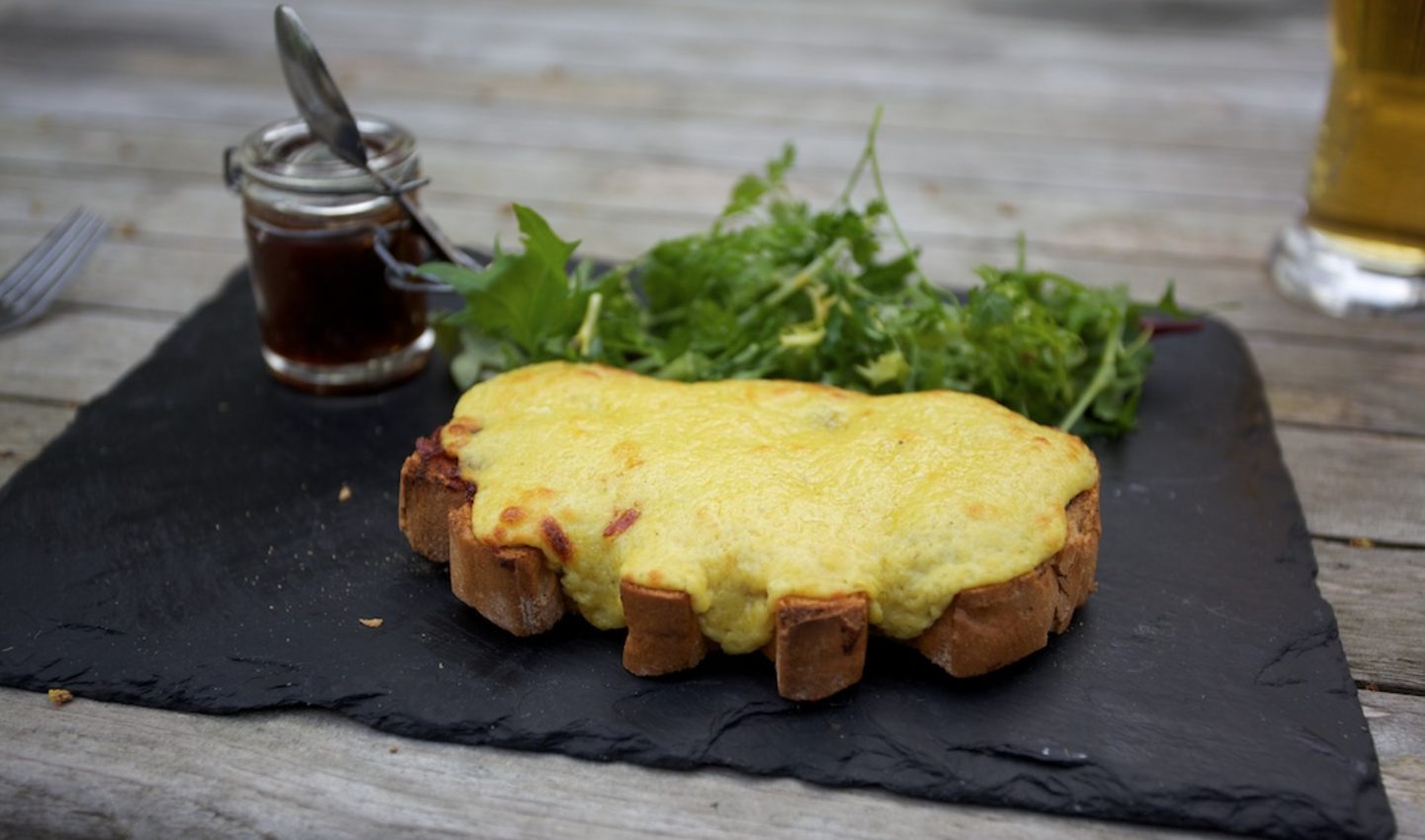Real Facts and Beer Make Welsh Rabbit Great Again
Photo: thefoodplace.co.uk CC-BY
There’s this thing WASPs do when mentioning a food they think is really delicious. If you have WASP friends, watch closely, you’ll see. It’s an understated smacking motion made with their lips as they say the name of the food. It never becomes an full, open-mouthed smack of delight but their lips do some kind of an unconscious double-take as they mouth the words.
My mother did this whenever she said “Welsh Rabbit.” “We’re having Welsh Rabbit for supper,” she’d say as she walked past me sprawled in front of the TV, and I could swear her eyes almost lit up, which was always weird because she had the habit of never showing sheer joy about anything at all, really. She called it “rabbit” in her New England accent, and I didn’t learn till much later it was also called “rarebit.” Welsh Rabbit it is to me, to this day—and there also remains something fairy tale-like to me about the dish itself—with its sheer power to make my mother anthropomorphically shift into a different being.
Here’s the basics about Welsh Rabbit: It’s a cheese dish. It can be made with milk or with beer. It’s hot and gooey and served over toast. It’s fast and easy to make. As a comfort food, it pretty much rates a 10/10. To me, it’s best when made with beer.
Though Welsh Rabbit originally was a British import, it’s now very American. These facts of bread, cheese and beer support endless adaptation, and each adaptation can be considered an improvement. Side it with kimchi or tabouleh and it will be every bit as comforting and delicious as it is with freshly sliced tomatoes or crisp steamed green beans.
The history of Welsh Rabbit as we know it begins in 18th-century Britain. The first recorded mention appeared in 1725, followed by an appearance in Hannah Glasse’s 1747 cookbook The Art of Cookery. In the following century it had made its way into the works of renowned chef Auguste Escoffier. It’s believed to have begun life as a luxurious dish served at wayside taverns, but by the time 20th-century America rolled around, it had settled into the life of home kitchens as an inexpensive dish almost any cook could successfully prepare.
-

-

-

-

-

-

-

-

-

-

-

-

-

-

-

-

-

-

-

-

-

-

-

-

-

-

-

-

-

-

-

-

-

-

-

-

-

-

-

-

 Photo by Karen Resta
Photo by Karen Resta






































